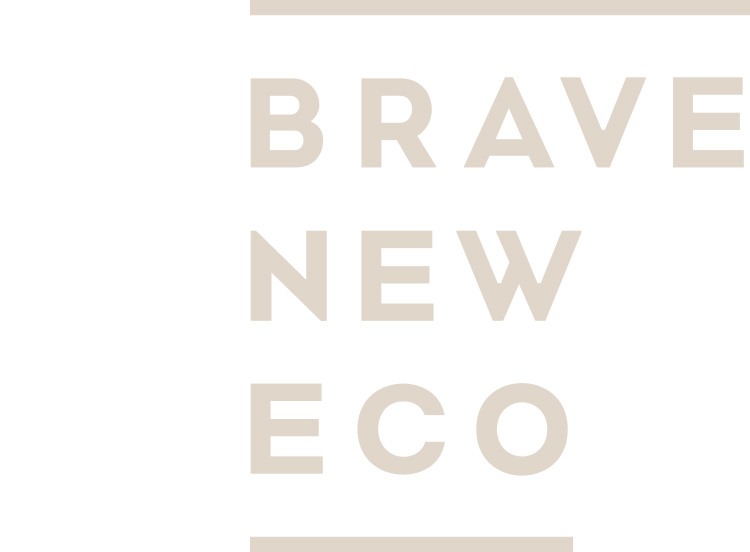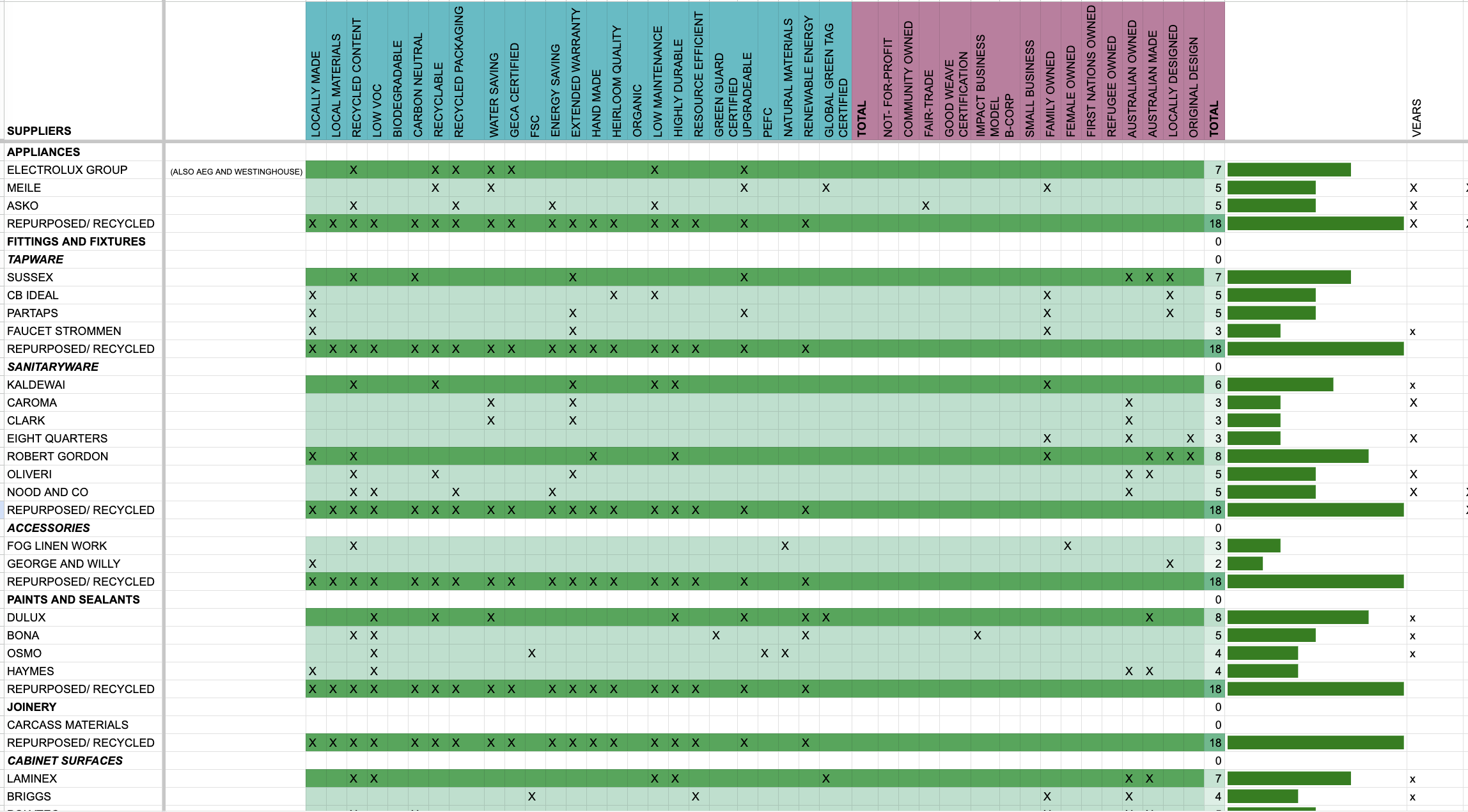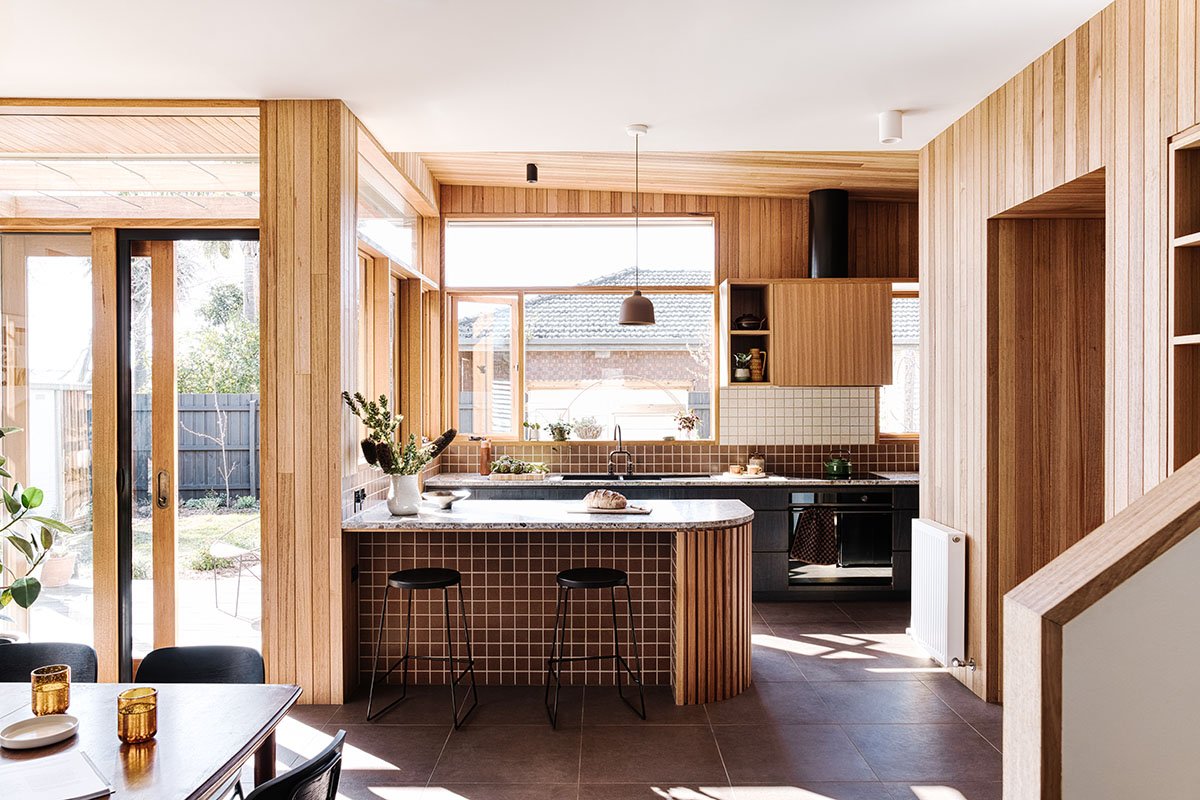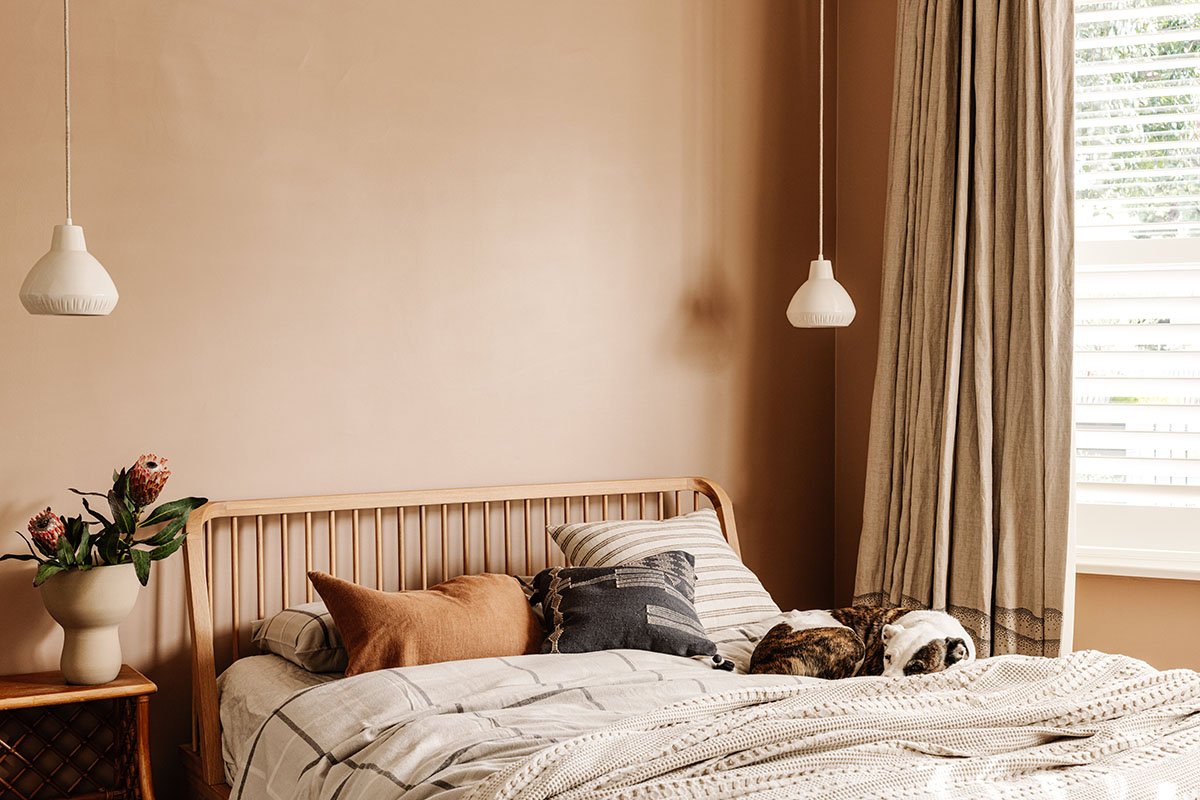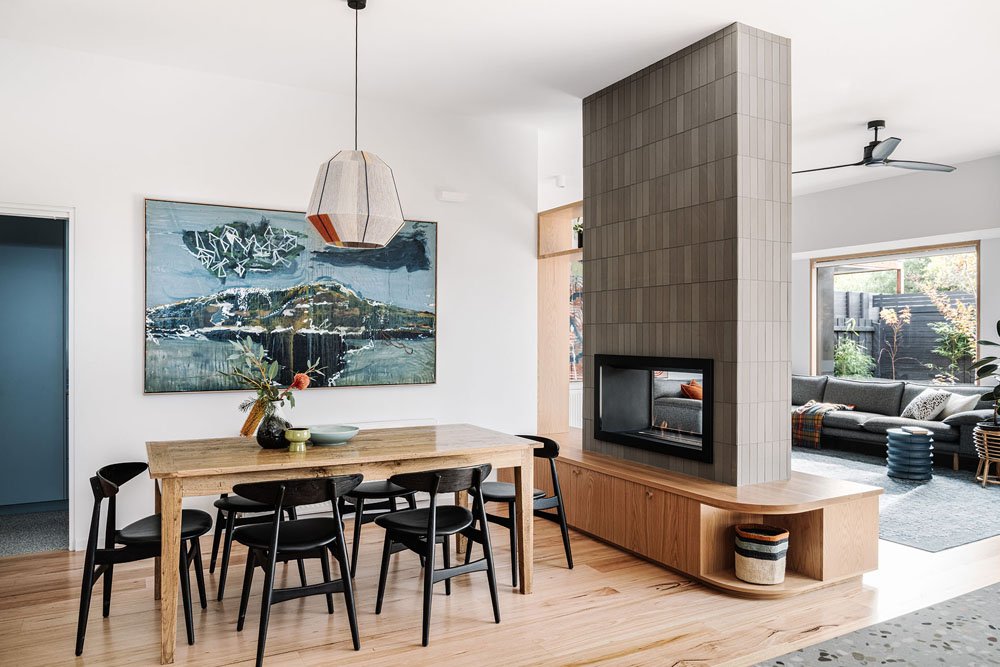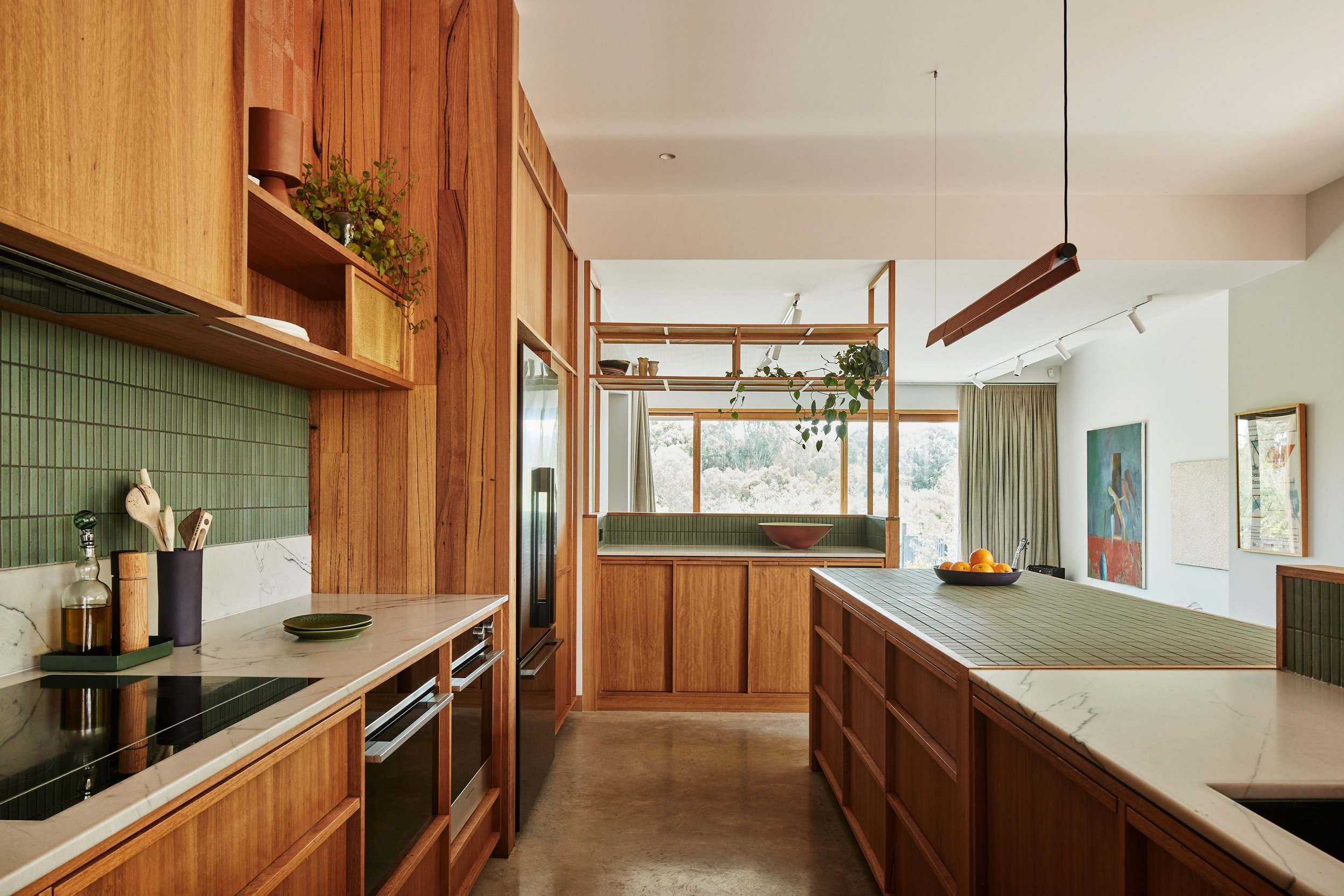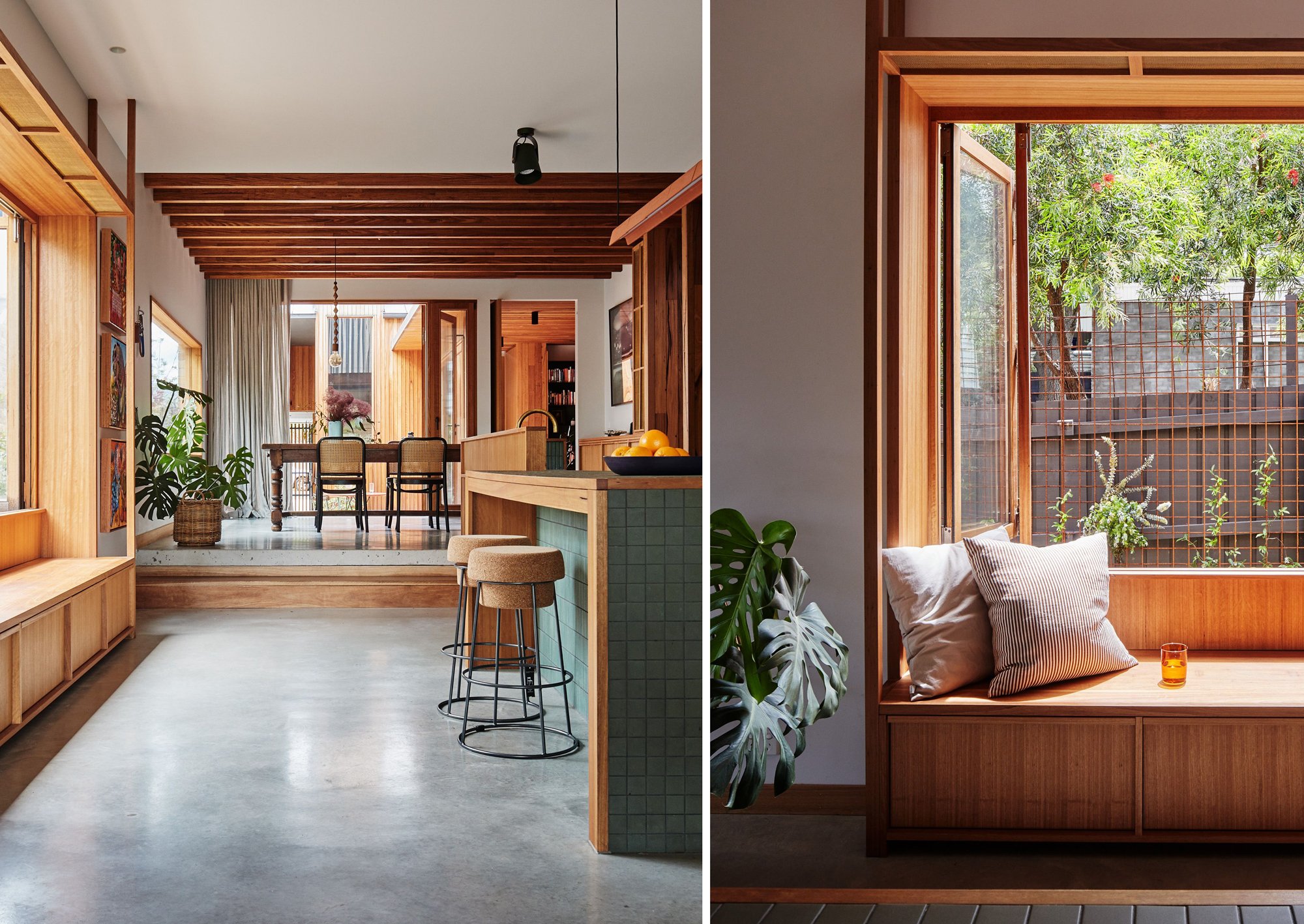Brave New Eco is committed to integrating ecologically sustainable design principles into our procurement practices- or in plain speak, how to make best-case choices about all the materials, fixtures and equipment that goes into a design.
Of all the sustainable design outcomes that can be achieved, we are the first to admit this is the least clear-cut. This is one reason we have a solid commitment to sustainable design at a function, form and operation level. It can be argued that the most sustainable building is one that already exists. All built interventions have a negative environmental impact in terms of resource use, and we work first and foremost to retain existing elements and reduce the size of our designs to achieve the maximum gain with the least material change.
We research all the elements that go into a design, always seeking the best choice that is feasible and fit for the project. As we work primarily on single residential and existing buildings, we have not found a third-party assessment tool that can capture the nuance of these choices at a small scale. For this reason, we have developed our internal methodologies to assess our selections. Our policy by which we evaluate suppliers and manufacturers is detailed below, but it does not tell the whole story. To understand how we think about procurement, we have summarised our approach in three main categories.
FIRST PRIORITY: Our holy grail of specification is one that exists already. This can mean reusing or repurposing an existing element, or the sourcing of a suitable recycled/second-hand one. When selecting second-hand items we prefer the re-use of brands that satisfy our nominated criteria below, given we consider them long-lasting and of good quality. This approach is not the easiest from a design level, as it takes more time and care to source and design around second-hand items. We consider flow-on flavour and skill-building benefits as part of the social outcomes of a project, as the restoration and complexity involved in using second-hand items fosters expertise in repair and restoration, diverts waste from landfill and adds a layer of emotional durability to the outcome. Many second-hand items have a significant human and past use story behind them, increasing the perceived value to the end-user, our clients.
SECOND PRIORITY: Focusing on certifications-only leaves out many small-scale, locally-produced and hand-crafted products and producers that are our second-level preference. These smaller makers and manufacturers may not have the resources to seek certification-level products, however, they may be implementing many low-impact methodologies, making exceptionally high-quality products, and contributing at a community level to local skills building which both retains skills that are otherwise disappearing in our local workforce, and adds to local economies through their procurement chains and activities. We can have direct conversations with producers at this scale and work in a collaborative way to make better products. There is a reduction in the embodied energy of transport, and these locally made products can be more emotionally durable for the purchaser. They are likely to love them for longer due to the connection and story they have formed with the maker.
THIRD PRIORITY: For products that are manufactured at scale by large companies, we look for third-party certification and companies that have broad, active and substantiated environmental and social policy goals and outcomes. Certifications include Good Environmental Choice, Global Green Tag, Forest Stewardship Council, Green Guard and Good Weave Certified. We also look at manufacturing processes, carbon neutral operations, onsite renewable electricity generation, wastewater reuse, recycling and take-back programs, packaging reduction or recycled packaging, and impact business models.
IMPLEMENTATION:
As we are a small company, we have been able to rely for many years on internal expertise and knowledge from our team to ensure sustainable choices. As we have a growing team of designers making procurement decisions, and in a world of greenwashing, we feel it is not enough to just know you do something, you need to be able to measure it, prove it, and improve on it. We now have developed policies and embedded internal systems across all stages of the design to ensure continued best-case outcomes.
SUPPLIER AND MANUFACTURER ASSESSMENT INTERNAL TOOLS:
Our design team researches and assesses each suppliers ESG performance (Environmental, Social and Governance). We assess the Ecologically Sustainable Design (ESD) and Corporate Social Responsibility (CSR) policies and actions of each company prior to adding them to an internal directory. Information, links and documents are summarised for the team and tags are applied to the contact when they are deemed to satisfy our criteria. We only provide tags for substantiated claims. Our research methodologies include background research on ownership and governance structures, including parent companies, material safety data sheets, manufacturing locations and processes, product material breakdowns, corporate statements and programs. We also contact sales reps for further information not readily available, or in the case of smaller companies, speak directly to makers about their processes. These companies are then sorted by the number of criteria they satisfy, highest to lowest and added to our proprietary metrics table that rates the number of tags a supplier has scored from both the ESD and CSR categories. This allows us to compare suppliers and manufacturers against others when making selections and then check off those selections on a project-by-project basis comparing the quantity of best-choice selections used in a project. The best-performing companies are always at the top of the list and are the first place we look when sourcing. Not all products are equal! Each product we use from a supplier is entered into our online product library, where we enter specific product sustainability information, including uploading product safety data sheets. This information is then made available for discussion and comparison to the clients, builder and other consultants via access to our live online portal.
OUR Ecologically Sustainable Design (ESD) PROCUREMENT POLICY:
This Ecologically Sustainable Design (ESD) Procurement Policy outlines our commitment to selecting suppliers and products that meet high environmental standards. We positively screen our supplies through the following metrics to prioritize the following criteria when procuring materials and products to promote ecological sustainability in our architecture and design projects. We aim to select suppliers that are deemed to satisfy more than 6 of these criteria.
Local Manufacture:
We preference the procurement of products manufactured in Victoria or Australia. Products carrying the "Australian Made" and "Locally Made" tags will be given preference during the procurement process.
Local Materials:
Brave New Eco encourages the use of locally sourced materials in our projects.
Preference will be given to products made from locally available materials, supporting the local economy and reducing transportation-related environmental impacts.
Recycled and or Recycled Content:
We preference the procurement of materials with a high percentage of recycled content. Products with more than 20% up to 100% recycled materials will be favoured during procurement.
Recyclable:
We preference the procurement of products that are designed for end-of-life recycling.
Preference will be given to products that have a take-back program, are cradle-to-cradle certified, or can be easily disassembled for recycling purposes.
Carbon Neutral:
We preference the use of suppliers and products that are carbon neutral or have a positive impact on carbon emissions.
Preference will be given to products manufactured using carbon-neutral processes or companies that offset their carbon emissions.
Water Saving:
We promote water conservation and efficiency in the procurement of products and materials.
Preference will be given to suppliers who employ wastewater recovery in their manufacturing processes or offer products with low water usage.
GECA Certified:
We prioritise products that have obtained sustainability certifications, such as GECA (Good Environmental Choice Australia). b. GECA certified products demonstrate their environmental performance, including reduced environmental impact and resource efficiency.
Energy Saving:
Brave New Eco encourages the selection of products that promote energy efficiency or reduce the need for energy consumption.
Preference will be given to products that are energy-efficient in their use or contribute to energy savings in the built environment.
Biodegradable:
Brave New Eco preferences the procurement of materials and products that are biodegradable and capable of breaking down when composted. Biodegradable materials contribute to the reduction of waste and environmental impact.
Organic Materials:
Brave New Eco preferences the procurement promotes the use of naturally occurring organic materials over synthetic or man-made alternatives.
Low Maintenance:
Brave New Eco favours products that require minimal sealing or maintenance over their lifetime.
Low-maintenance products reduce the need for additional resources and contribute to long-term sustainability.
Low VOC/Non-Toxic:
Brave New Eco promotes products that have low VOC (Volatile Organic Compounds) emissions or are non-toxic.
Preference will be given to products that meet or exceed industry standards for VOC emissions and are safe for occupants' health.
FSC Certified Timbers:
Brave New Eco supports the procurement of products that are Forest Stewardship Council (FSC) certified.
FSC certification ensures that wood and wood-based products come from responsibly managed forests, promoting sustainable forestry practices.
Highly Durable:
Brave New Eco prioritises the selection of highly durable products that have a long lifespan.
Preference will be given to products known for their durability and ability to withstand wear and tear.
Long Warranty:
Brave New Eco promotes the selection of products that come with warranties beyond the industry standard.
Preference will be given to products with warranties of 10, 20 years, or lifetime warranties, indicating their high quality and durability.
Handmade:
Brave New Eco values the craftsmanship and uniqueness of handmade products.
Preference will be given to products that are meticulously crafted by artisans, contributing to the preservation of traditional skills and promoting sustainable livelihoods.
Heirloom Quality:
Brave New Eco preferences products that exhibit exceptional quality and have the potential to last a lifetime.
Preference will be given to products that meet the highest standards of craftsmanship, durability, and timeless design, promoting sustainability through longevity.
Upgradeable:
Brave New Eco preferences products that offer upgrade options to extend their lifespan and reduce waste.
Preference will be given to products that provide replacement parts, refinishing services, or after-sale options to upgrade and enhance their functionality over time.
Communication and Implementation:
Brave New Eco will communicate this Ecologically Sustainable Design (ESD) Procurement Policy to all employees, suppliers, and relevant stakeholders. It will be implemented immediately upon approval. The policy will be periodically reviewed and updated to ensure its continued effectiveness and alignment with our sustainability goals.
OUR CORPORATE SOCIAL RESPONSIBILITY (CSR) PROCUREMENT POLICY:
Brave New Eco is committed to corporate social responsibility and making positive contributions to society through our procurement practices. This Corporate Social Responsibility (CSR) Procurement Policy outlines our commitment to supporting various social causes and promoting sustainable business models. We prioritise the following criteria when procuring products and services to align with our CSR goals.
Not-for-Profit:
Brave New Eco supports not-for-profit organisations and their initiatives. Preference will be given to suppliers that operate as not-for-profit entities, contributing to social welfare and community development.
Community Owned:
Brave New Eco promotes the procurement of products and services from community-owned enterprises.
Preference will be given to suppliers owned and operated by the local community, fostering economic empowerment and community development.
Fair Trade:
Brave New Eco supports fair trade practices and the principles of ethical sourcing.
Preference will be given to suppliers certified as fair trade, ensuring fair wages, safe working conditions, and sustainable livelihoods for workers.
Impact Business Model:
Brave New Eco values suppliers that have an impact-driven business model.
Preference will be given to suppliers that prioritise social or environmental outcomes and integrate them into their core business strategies.
Locally Designed:
Brave New Eco promotes the procurement of products and services that are locally designed.
Preference will be given to suppliers that promote local design talent, fostering creativity and supporting the local design industry.
Original Design:
Brave New Eco values suppliers that offer original and innovative designs.
Preference will be given to suppliers that promote unique, creative, and original design concepts, contributing to the advancement of the design industry.
Family-Owned:
Brave New Eco supports family-owned businesses and their contributions to the economy.
Preference will be given to suppliers that are family-owned and operated, promoting entrepreneurship and generational sustainability.
Female-Owned:
Brave New Eco promotes gender equality and the empowerment of women in business.
Preference will be given to suppliers that are female-owned and operated, contributing to the advancement of women entrepreneurs and leaders.
First Nations Owned:
Brave New Eco recognises the importance of supporting First Nations businesses and communities.
Preference will be given to suppliers that are owned and operated by First Nations individuals or communities, fostering economic development and cultural preservation.
Refugee Owned:
Brave New Eco supports refugee-owned businesses and their integration into the economy.
Preference will be given to suppliers that are owned and operated by refugees, providing opportunities for livelihood and economic self-sufficiency.
Small Business:
Brave New Eco promotes the growth and sustainability of small businesses.
Preference will be given to suppliers classified as small businesses, supporting local entrepreneurship and economic diversification.
Australian Owned:
Brave New Eco prioritises the procurement of products and services from Australian-owned and operated businesses.
Preference will be given to suppliers that are Australian-owned, contributing to the local economy and fostering national self-sufficiency.
